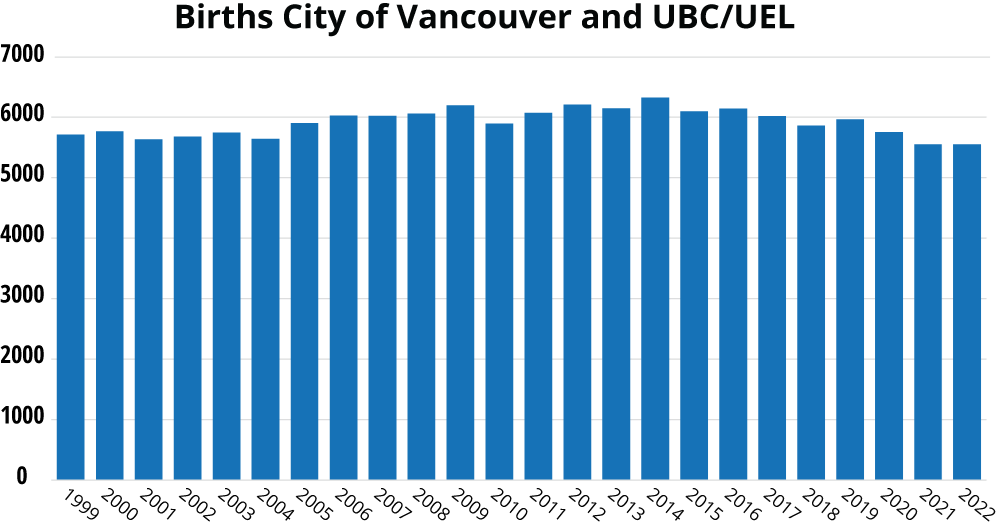District Forecast Considerations
When forecasting future enrolment trends, the District looks at the birth rate and youth population (5-17 years old) in Vancouver, as well as how many families with school aged children move out of the city, also known as migration rate. The birth rate and migration rates are strongly correlated youth population, which in turn forecasts school enrolment trends. Additionally, another factor that impacts enrolment is the capture rate, which is the portion of school aged children residing in Vancouver and attending a VSB school instead of an independent school. The District’s capture rate has remained stabled for many years averaging at about 82 per cent.
When considering future enrolment growth, a 15-year forecast is used to analyze district enrolment trends and a 10-year forecast is used for localized catchment enrolment trends. The potential impact of local development, that may take place in the longer term - the next 25 to 50 years - can be assessed; however, detailed and localized enrolment forecasting of more than 10 years typically lacks accuracy and reliability.
Birth Rate
Birth rate, the number of births per year, is a statistic gathered by Vital Statistics BC. Historic changes in the number of births are an important factor impacting past, present, and future enrolments. The number of births per year in Vancouver has not kept pace with overall population growth within the District. Since reaching the peak in 2014, the number of births has been trending lower at an average of 111 fewer births per year. The number of births recorded in 2021 was the lowest in two decades. Births are a leading demographic indicator for future enrolment as kindergarten enrolment is correlated with the number of births five years earlier.
VSB students currently enrolled in kindergarten to Grade 12 were born between 2005 and 2017, during which time the number of births per year averaged 6083. Over the past 4 years, births have averaged 5780 per year, a decrease of 303.

Note: Birth rates are annually published near the year end of the following year. The 2022 birth rates will be published in November 2023.
Migration Rate
Migration rate is the number of residents moving in and out of the city. Over the last decade, the District has seen a negative migration rate for families with children. The highest negative rates are experienced by families with 0-5-year-old children. This means families with school aged children are moving out of Vancouver, with many doing so when their child(ren) is between 0-5 years old. Migration rates are updated annually and available on the District’s open data source.

